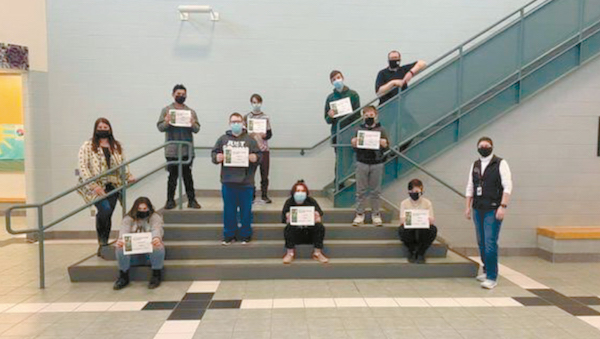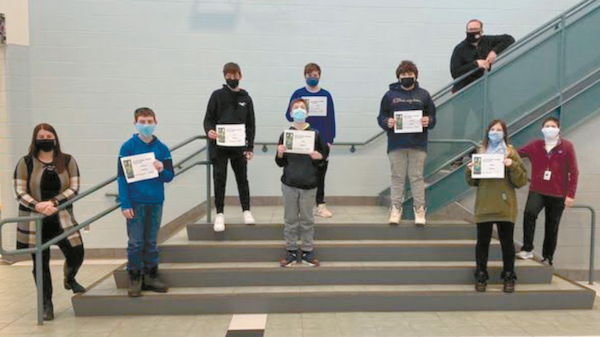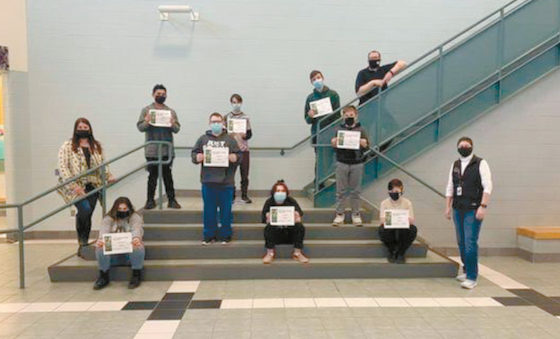This year, students from Gorham Middle School (GMS)’s alternative education program advanced into the Wonder League Robotics international competition. All nine teams from within the alternative education program made it to the final round, along with 31 other middle school teams from around the world.
To qualify for the international round, students had to first complete five missions, which consisted of robotics and coding challenges. In January, students virtually submitted evidence of completion to judges, who determined who would qualify for the final competition.
Heather Whitaker, GMS alternative education teacher, is incorporating this STEAM (Science, Technology, Engineering, Art, and Mathematics) experience into her curriculum. She’s using it as a project-based way to meet the required standards. Terri Dawson, GMS’ technology integrator, is also collaborating with the teams.
In this year’s competition, students had to learn how to use functions and variables. These functions and variables needed to be included in the code students were creating. To do so, high level thinking skills and perseverance were required.

Students from Gorham Middle School’s alternative education program advanced into the Wonder League Robotics International Competition. Cohort A left to right: Heather Whitaker, Nevaeh Boucher, Gage Beaulieu, Dillon Harrington, Matt DesRoches, Abigail Bubier, Dylan Dupra, Leo Kiyanitsa, Matt Clark, Ethan Garnett, and Terri Dawson.

“We had ups and downs and argued, and we had different ideas, but it was good to collaborate,” said Gage Beaulieu, GMS student. “We finally combined our little ideas for a big idea.”
Even before COVID-19, the Wonder League Robotics competition was done virtually.Withthatbeingsaid,inperson students at GMS still need to collaborate. In order to safely do so, students are physically kept six feet apart while working together and being creative. While learning at home, students Zoom into class to get synchronous instruction to help keep the process moving forward.
Currently, students are working on their final project to submit to the competition, which is due February 22, 2021. They are required to write code, use attachments, create a 10-minute filmed presentation, design their set, and keep a detailed, reflective journal.
For students’ final presentations they are encouraged to use multimedia, VR and augmented reality, green screens, and anything else creative. The goal is to make their presentations connect with the community and be visually appealing. This year’s theme has to do with environmental stewardship.
Students are competing against teams from Saudi Arabia, Bulgaria, Australia, the Philippines, and North Korea, to name a few. The winning prize is $5,000. The first five finishers in each age category also receive their own robot worth $200.
These students have now acquired an intermediate level of knowledge on coding, which gives them a head start on their future aspirations. Students are building the foundation to get ahead and prepared for high school technology classes or even careers in STEAM.


